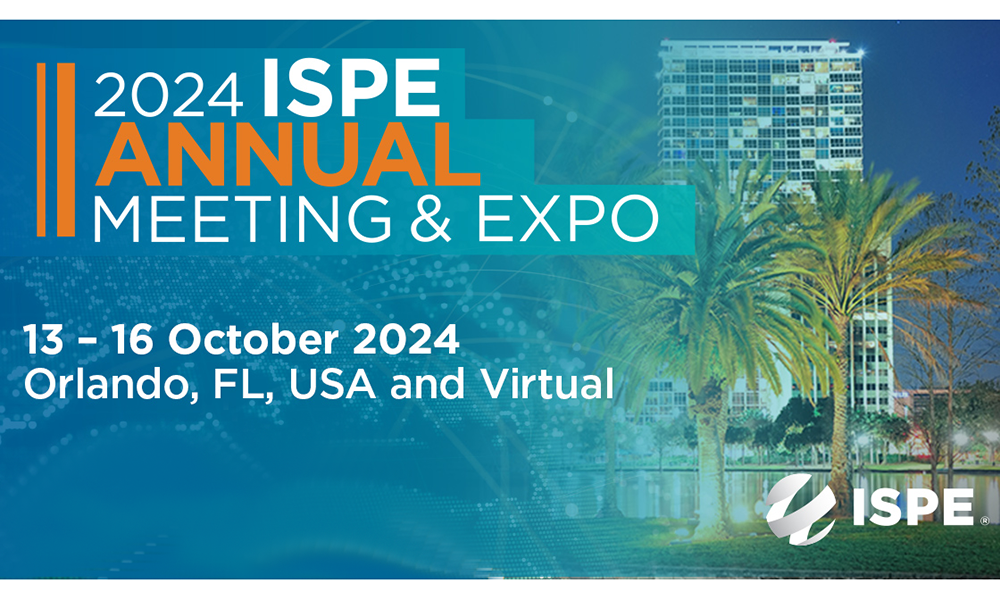Elevating Contamination Control: From Airflow Studies to Hydrogen Peroxide Applications

Annex 1 has been in effect since August 2023. But what has been its impact? This topic will be discussed at the 2024 ISPE Aseptic Conference in Vienna, Austria and virtually. Speakers from both industry and regulatory will share their insights on how companies are implementing the new requirements, the challenges that still exist, and the outlook on what is coming.
Contamination control is the new buzzword for an overarching strategy to avoid contamination with germs, pyrogens, and particles in sterile products, but what does it mean in practice, and what needs to be implemented to support this strategy?
As quality risk management is the basis for everything in Annex 1, it does make sense to use the International Council for Harmonization of Technical Requirements for Pharmaceuticals for Human Use (ICH) Q9 (R1) to develop the contamination control strategy. The new version of ICH Q9 is aiming to reduce subjectivity in risk analysis, and the first examples of how to approach this will be shared.
Decontamination of cleanrooms and barrier systems like restricted access barrier systems (RABS) and isolators is generally done with hydrogen peroxide, and while this technology has been around for a long time, advances are still being made. This includes the application of the agent via vaporization or atomization, but also the qualification of the systems using biological indicators. Rapid decontamination is key for operational effectiveness, but what about the impact of residues of hydrogen peroxide on a product? New analytical methods have been developed and qualified to quantify these effects and assure the purity of the sterile products. At the same time, we should not forget that innovation is also happening in microbiological monitoring, with rapid and online testing becoming more and more prominent.
However, the industry is still struggling to formulate a correlation between the results of conventional methods and biofluorescence.
Contamination Control Strategy (CCS)/Annex 1 Track Highlights
One of the principles of cleanroom technology is directed airflow away from open products and containers. To qualify the systems, airflow visualization studies are essential, and are regularly looked at during inspections and audits. What are the best practices for conducting these studies? What have we learned from recent studies? An interesting side note here is that Annex 1 in the version of European Medicines Agency (EMA) and World Health Organization (WHO) are essentially the same, except for one little word: while EMA is asking for air flow velocity at working position, with a guidance value of 0.45 m/sec, WHO has rephrased it as at working height. While this seems marginal, it does have a big impact, and depending on the physical layout of a filling line, can lead to the negative effects of turbulence at the filling station, increasing the risk of introduction of particles. (As a side note, the results of this research have been published in the September/October 2023 issue of Pharmaceutical Engineering.)
One of the sessions on Wednesday, 13 March, will focus on these topics. Thais Vilgren from Novo Nordisk will report on the implementation of online microbiological monitoring on the latest generation of isolators that are currently installed by the company. First results from discussions and approvals by regulatory authorities will also be shared.
ISPE is working on an update for the ISPE Baseline Guide – Sterile Product Manufacturing Facilities. This work is being done by the Community of Practice for Sterile Products and Processes. At the conference, Ryan Waldhardt from Grand River will go into the details of the gap analysis performed by the group. This will then be implemented into the new version of the Baseline Guide.
Finally, Hussein Bachir from Ziel will elaborate on behalf of James Drinkwater on how to perform a risk analysis, as basis for the contamination control strategy document, with less subjectivity.
Hydrogen Peroxide (H₂O₂) Track Highlights
On the same day, Wednesday, 13 March, Kate Marshall with Protak Scientific LTD will kick off the H₂O₂ track. She will discuss the benefits of Enzyme Indicators (EIs) as an innovative rapid tool for providing instant and quantitative feedback of H₂O₂ efficacy by providing real-time quantifiable data when applied to cycle optimization, qualification, and troubleshooting.
This will be followed by a presentation from Theresa Ludwig with Skan AG and Thorsten Hoefner with PSM GmbH on best practices for H₂O₂ decontamination cycle development and validation of fully gloveless isolators. This collaborative presentation will provide an overview of the technology and showcase case studies from various pharmaceutical companies and their collective suggestions on applications and future usage of Eis.
Lastly, Alexandra Heussner, PhD, with Vetter Pharma-Fertigung GmbH & Co KG will provide the concluding session for this track by discussing H₂O₂ detection methods in pharmaceutical water and drug products.
Micro/Particles Track Highlights: Session Particles/Environmental Monitoring
Additionally, on Wednesday, 13 March, Johannes Oberdöerfer with Rapid Micro Biosystems will offer a glimpse into the future by presenting a system for microbiological online monitoring. Besides describing the functionality, he will discuss aspects crucial for regulatory acceptance and share findings from an on-site customer study.
Airflow studies are essential for validating the unidirectional airflow within machines used for aseptic processing. Luca Calisi and Maurizio Della Pietra with Particle Measuring Systems will further elaborate on airflow studies, specifically addressing the impact of the new Annex 1 in this field. This presentation will cover practical aspects such as conducting smoke studies during operation, simulating the process steps, as well as the methodologies for generating smoke and documenting results.
Attendees will have the opportunity to delve deeper into this topic with presentations from Norman Goldschmidt with Genesis AEC and Morgan Polan, a consultant with Microite, Inc. Titled “Airflow Visualization – Using smoke to make things clearer,” their session promises to provide valuable insights, drawing from the comprehensive ISPE Airflow Visualization handbook.
The ISPE 2024 Aseptic Conference promises to be a pivotal event for professionals in the pharmaceutical industry, offering invaluable insights into the practical implementation of Annex 1 requirements and the latest advancements in contamination control strategies. With engaging sessions covering a wide array of topics, including airflow studies and environmental monitoring, attendees will have the opportunity to enhance their knowledge and network with industry peers. Don't miss out on this opportunity to gain valuable insights and propel your organization forward in the ever-evolving landscape of aseptic processing.
.jpg)





